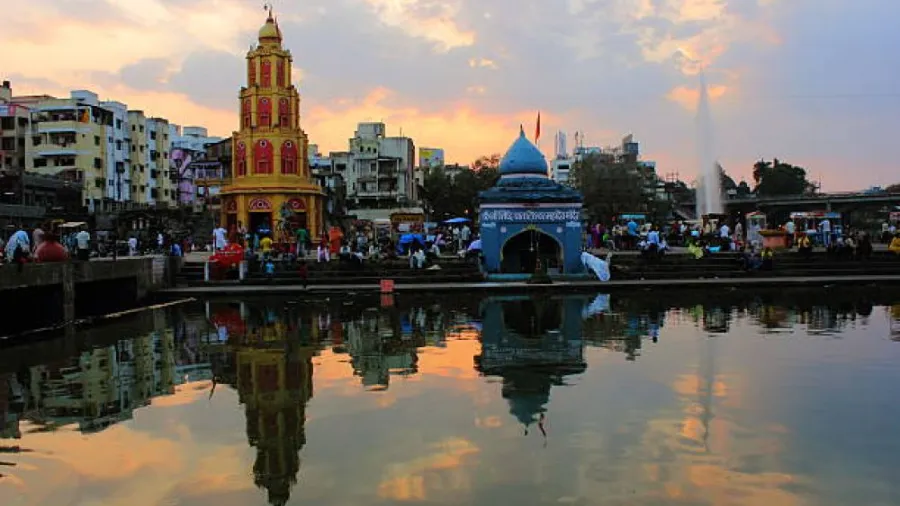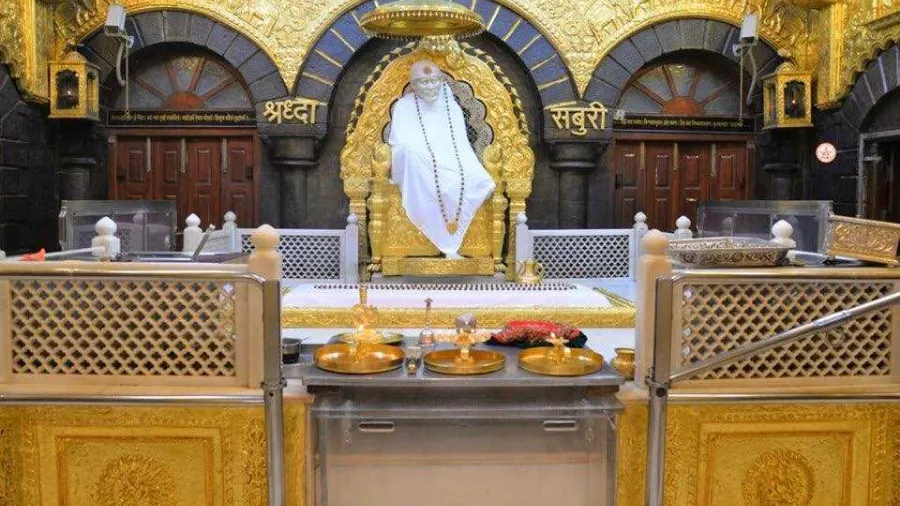10 Must-Visit Temples in Nashik: A Journey Through Mythology and History.
Prabhuling jiroli
Nashik, known as the wine capital of India, is also one of the holiest cities, rich in history and spirituality. The city is dotted with ancient temples that not only serve as places of worship but also encapsulate the essence of Indian culture and mythology. From ancient shrines to modern architectural wonders, these temples offer a glimpse into Nashik's spiritual landscape. Here’s a look at the 10 temples in Nashik that you must visit before you die.
1. Kumbh Mela Temples (Kumbh Mela Site)

Mythology & Significance: Nashik is one of the four sites of the Kumbh Mela, a major pilgrimage and festival in Hinduism. The event is believed to cleanse sins, and thousands gather to partake in the holy bath at the Godavari River.
How to Reach:
- By Road: Located in Nashik city; easily accessible by local transport.
- By Train: Nashik Railway Station is nearby.
When to Visit: Kumbh Mela is held every 12 years; otherwise, visit during the month of Shravan (July-August).
Tips: Arrive early to beat the crowds during the festival.
2. Panchavati Temple Complex

Mythology & Significance: The Panchavati Temple Complex is believed to be the site where Lord Rama, Sita, and Lakshmana spent part of their exile. It includes several important temples like Kalaram Temple and Saptashrungi.
How to Reach:
- By Road: Centrally located in Nashik; accessible by local transport.
- By Train: Nashik Railway Station is close by.
When to Visit: Throughout the year, especially during Rama Navami.
Tips: Explore all the temples in the complex for a deeper understanding of the mythology.
3. Kalaram Temple

Mythology & Significance: The Kalaram Temple is dedicated to Lord Rama and is one of the oldest temples in Nashik. It is believed that the idol of Rama here is made from black stone, hence the name "Kalaram."
How to Reach:
- By Road: Located in Panchavati, about 2 km from Nashik Railway Station.
- By Public Transport: Local buses and auto-rickshaws are available.
When to Visit: Visit during Rama Navami for special celebrations.
Tips: Dress modestly and respect local customs when visiting.
4. Anjneri Hill Temple

Mythology & Significance: Located on Anjneri Hill, this temple is dedicated to Lord Hanuman and is believed to be the birthplace of Hanuman. It offers stunning views of the surrounding area.
How to Reach:
- By Road: About 20 km from Nashik; drive or hire a cab.
- By Public Transport: Buses are available from Nashik city.
When to Visit: Throughout the year, but early morning is best for trekking.
Tips: Wear comfortable shoes for the trek and carry water.
5. Saptashrungi Temple

Mythology & Significance: Dedicated to Goddess Saptashrungi, this temple is situated on a hilltop and is one of the 51 Shakti Peethas. It is believed that visiting this temple fulfills devotees' wishes.
How to Reach:
- By Road: About 60 km from Nashik; drive to Vani village and then trek to the temple.
- By Public Transport: Buses are available from Nashik to Vani.
When to Visit: Best visited during Navratri.
Tips: The trek can be steep; ensure you’re physically prepared.
6. Lord Shiva Temple, Nashik (Brahmagiri)

Mythology & Significance: The Brahmagiri hill is home to a significant Shiva temple where it is believed that Lord Shiva appeared in the form of a linga. The temple attracts many devotees, especially during Mahashivratri.
How to Reach:
- By Road: Located near Nashik city; easily accessible.
- By Train: Nashik Railway Station is nearby.
When to Visit: Mahashivratri (February-March) is particularly special.
Tips: Join the evening aarti for a spiritual experience.
7. Jain Mandir, Nashik

Mythology & Significance: The Jain Mandir in Nashik is dedicated to various Tirthankaras. Known for its intricate architecture and serene atmosphere, it serves as a spiritual retreat for Jains and visitors alike.
How to Reach:
- By Road: Located in the city; easily accessible by local transport.
- By Train: Nashik Railway Station is close by.
When to Visit: Throughout the year, especially during Paryushana.
Tips: Maintain silence and respect the tranquility of the temple.
8. Muktidham Temple

Mythology & Significance: The Muktidham Temple is known for its unique architecture and the presence of various deities. The temple houses replicas of the 12 Jyotirlingas and is dedicated to Lord Krishna.
How to Reach:
- By Road: Located about 7 km from Nashik city center.
- By Public Transport: Auto-rickshaws and local buses are available.
When to Visit: Best visited during Krishna Janmashtami.
Tips: Explore the surrounding area for its spiritual significance and beautiful gardens.
9. Sai Baba Temple, Nashik

Mythology & Significance: This temple is dedicated to Sai Baba of Shirdi, who is revered by millions. The temple offers a peaceful environment for devotees seeking blessings and solace.
How to Reach:
- By Road: Centrally located in Nashik; accessible by local transport.
- By Train: Nashik Railway Station is nearby.
When to Visit: Throughout the year; special celebrations during Sai Baba Punyatithi.
Tips: Participate in the evening prayers for a serene experience.
10. Harihar Fort Temple

Mythology & Significance: The temple at Harihar Fort is dedicated to Lord Shiva. The fort is known for its breathtaking views and the challenging trek to reach the temple.
How to Reach:
- By Road: About 40 km from Nashik; drive or take a cab.
- By Public Transport: Buses are available from Nashik.
When to Visit: Best during the cooler months (October to February).
Tips: Prepare for a trek; bring sufficient water and snacks.